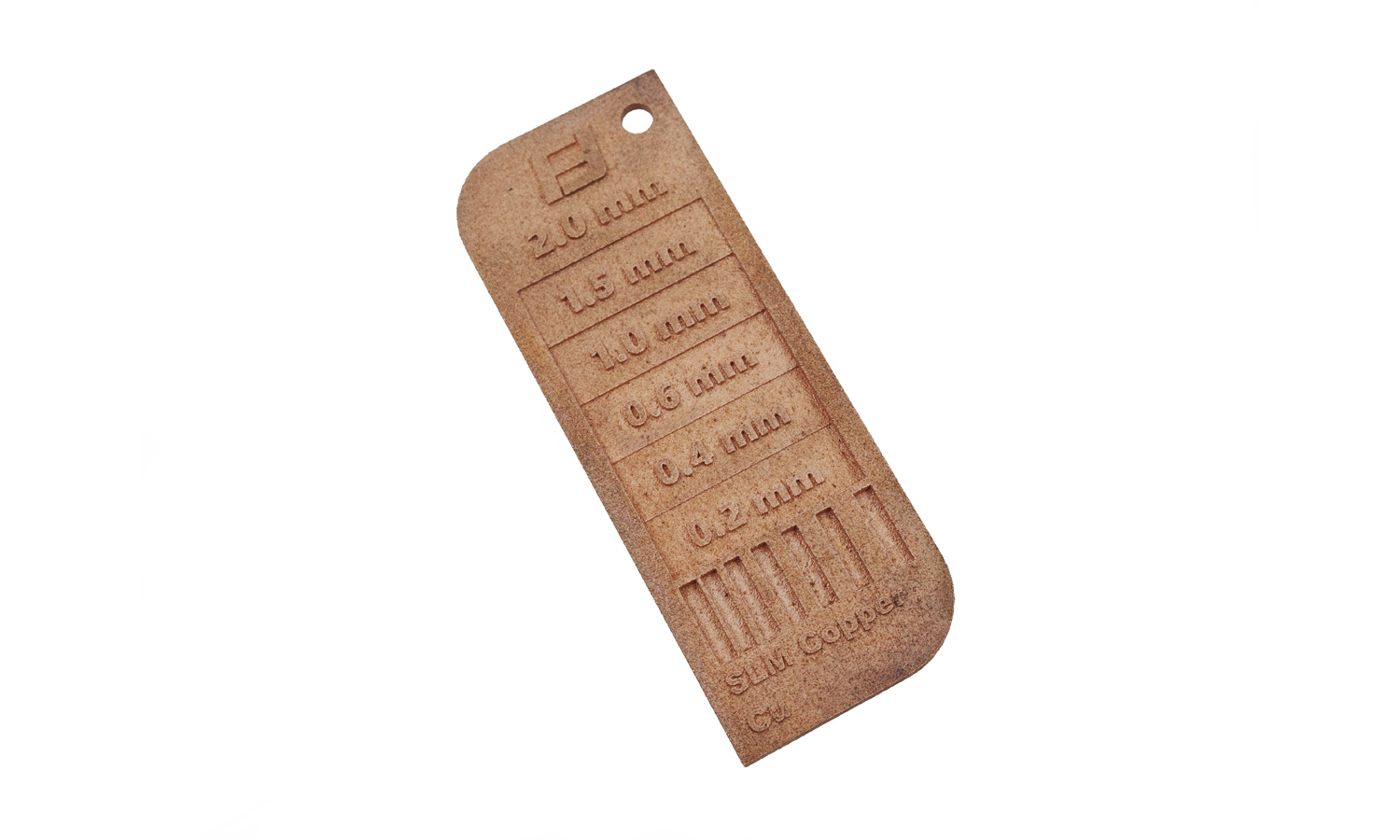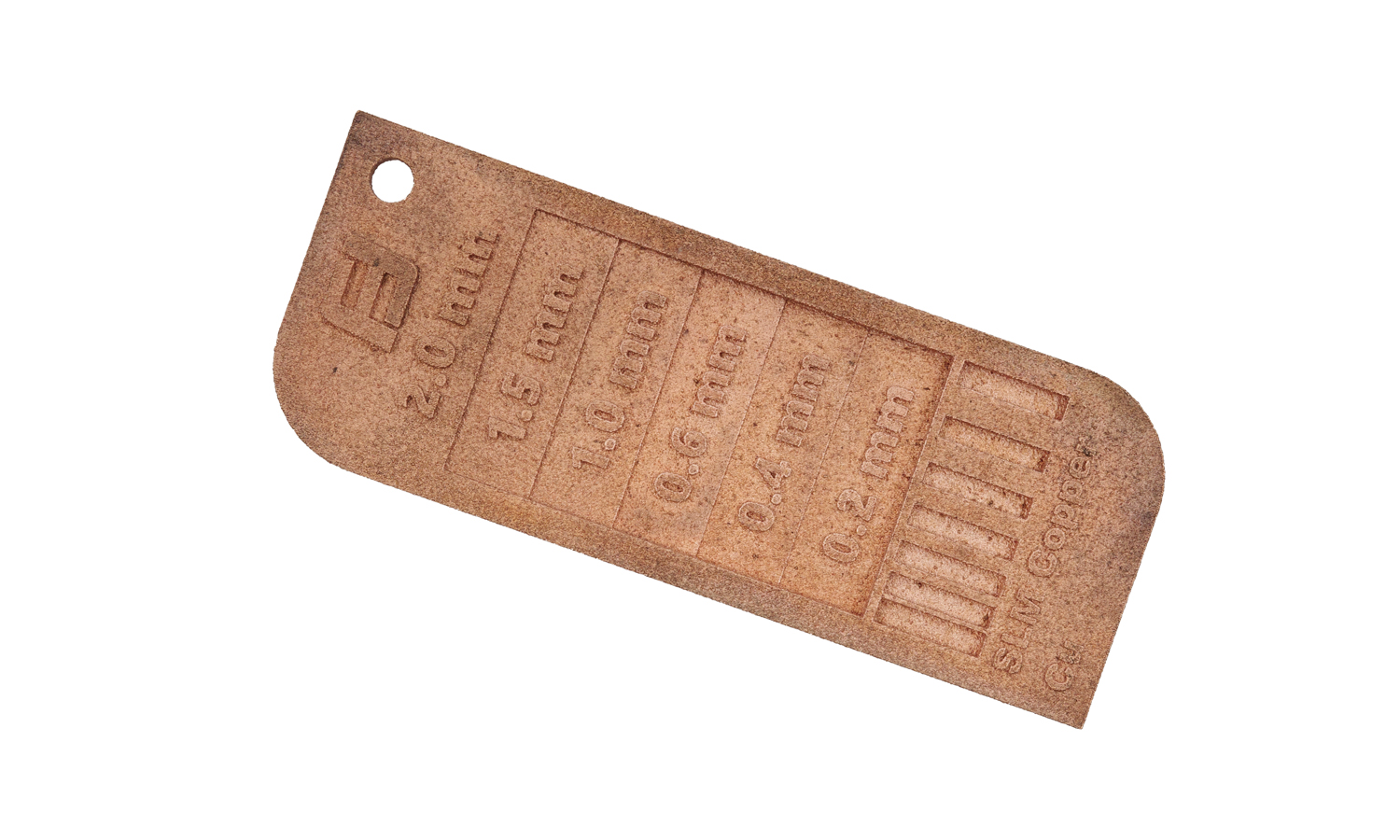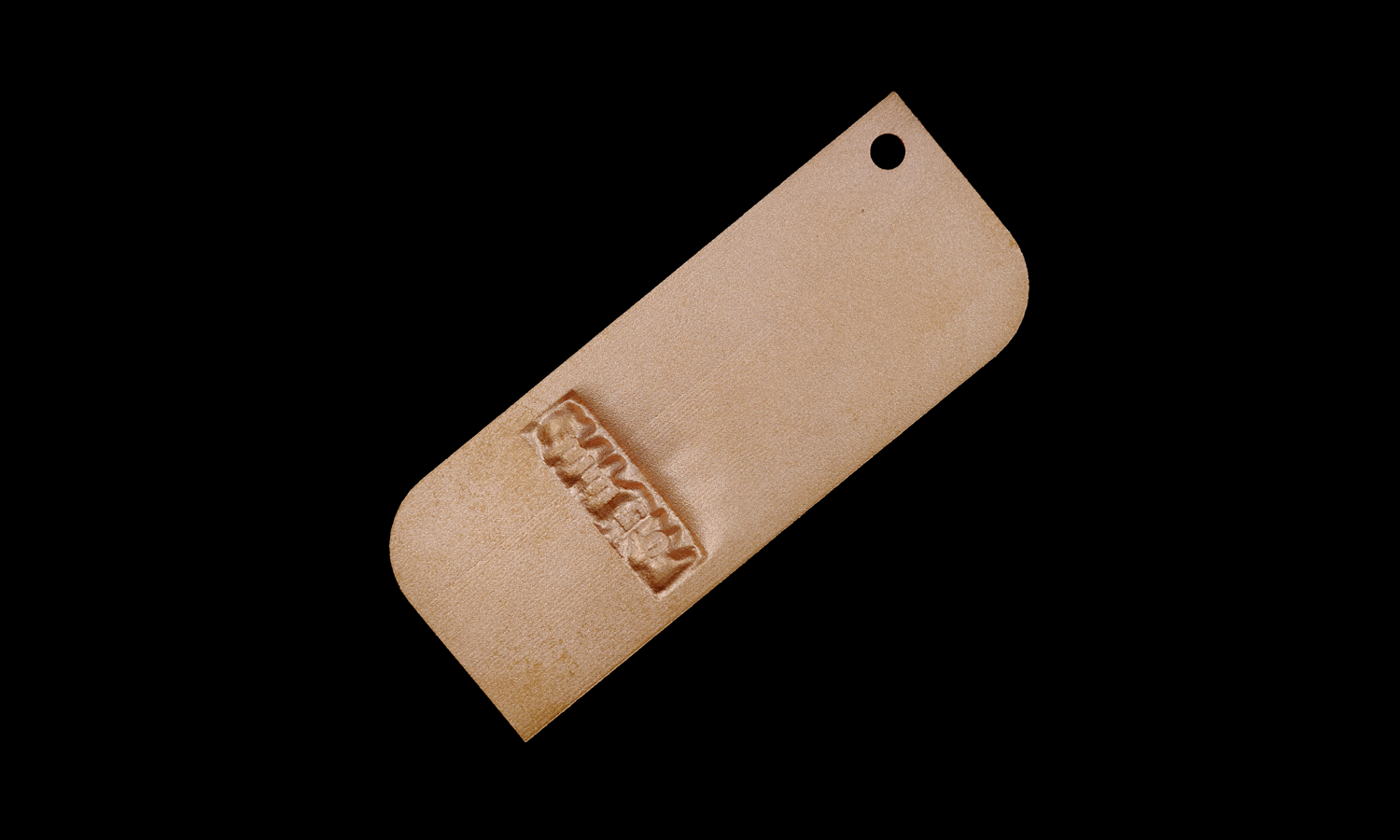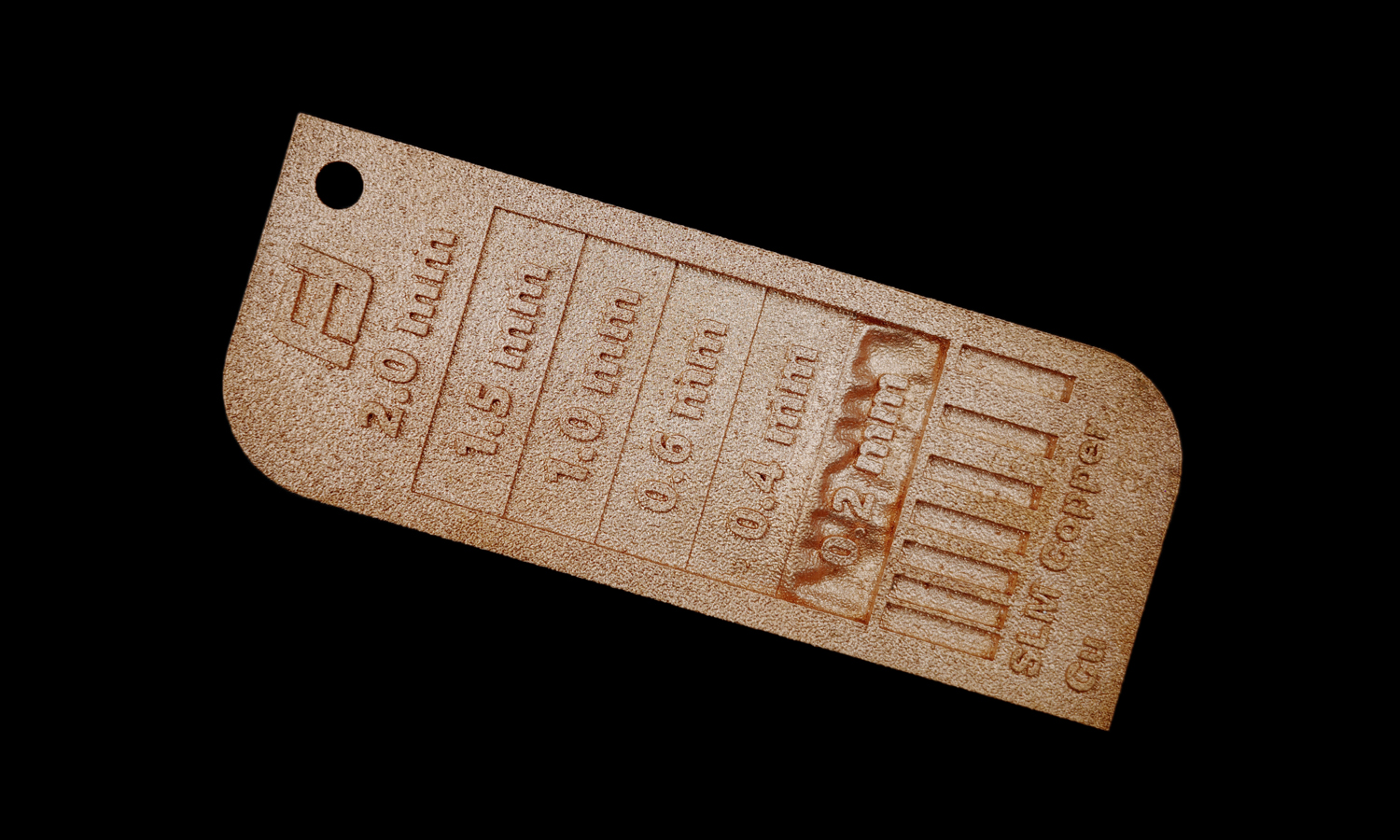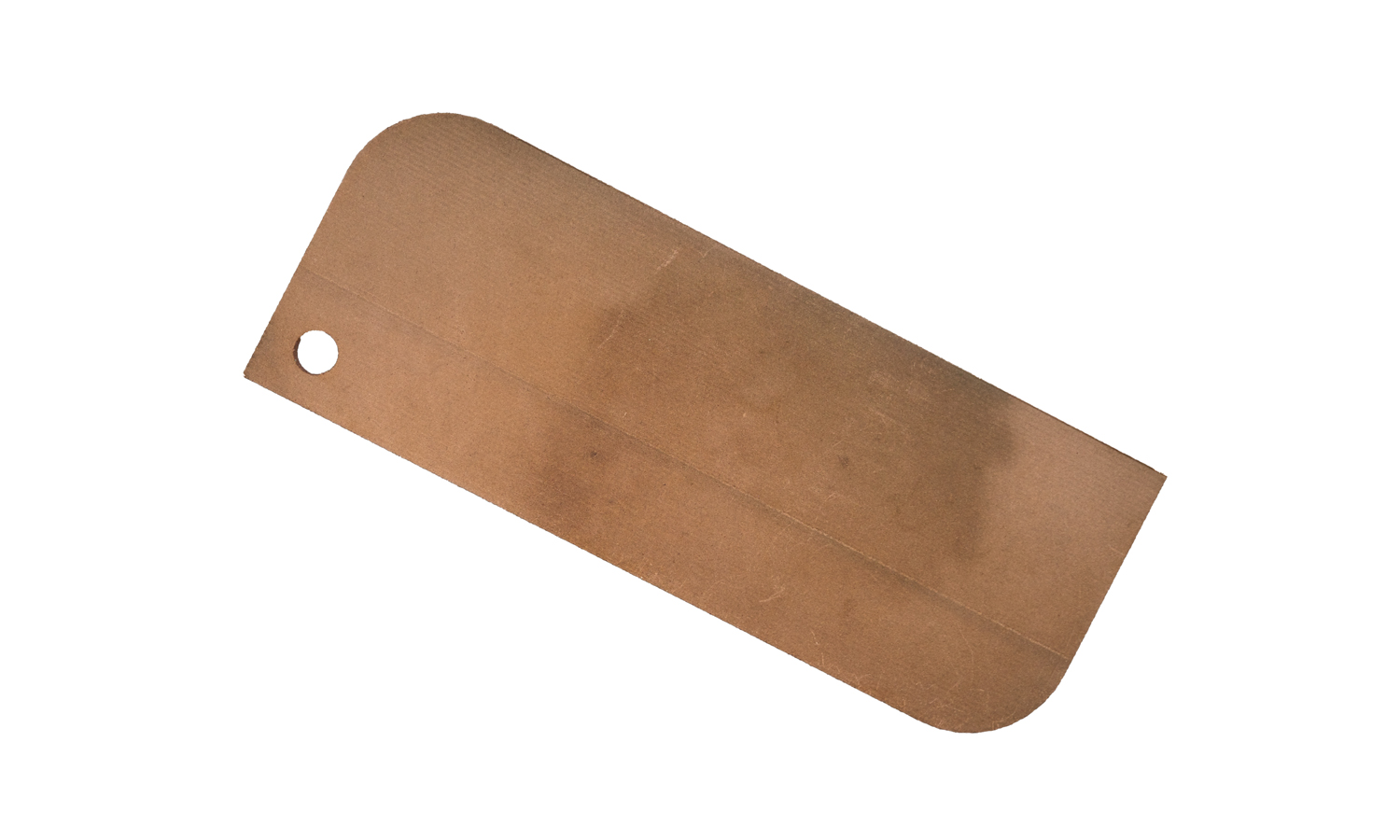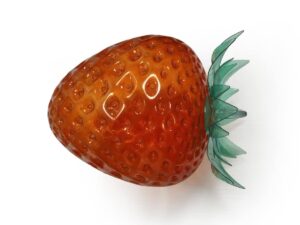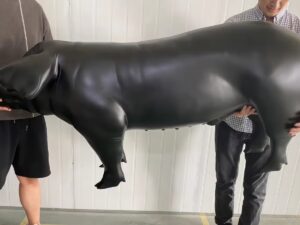- CNC Machined Aluminum Xenon Ballast Control Unit Enclosure
- Mimaki 3D Printed Full-color Bulbasaur Keycap Fanart
Gallery
About Project
Copper, with its warm hue and excellent conductivity, is a fascinating material for 3D printing. At FacFox, we specialize in creating intricate parts using Selective Laser Melting (SLM) with pure copper. Today, we’re showcasing the natural transformation of an SLM 3D printed pure copper sample strip, highlighting the effects of oxidation and the remarkable results of polishing.
The Oxidized State: A Patina of Time
The initial image captures the sample strip after natural oxidation. Notice the ununiformed matte brownish tone that blankets the surface. This oxidized layer gives the tag a distinctly dull, aged, and rough look, absorbing light rather than reflecting it. Despite this surface change, it’s impressive to see that even the delicate 0.2mm-thick stage remains undeformed, a testament to the precision of the SLM printing process. This demonstrates how pure copper, while susceptible to oxidation, can maintain its structural integrity even in thin sections.
The Polished Revival: Bringing Back the Shine
The second image reveals the same sample strip after a careful polishing process using sandpaper. The difference is striking! The polished surface now exhibits a brighter, metallic copper-like luster, instantly catching the light. Its reflective and smooth surface has completely transformed the appearance, giving it a fresh and well-maintained look. Interestingly, due to copper’s inherent ductility, the previously undeformed 0.2mm-thick stage is now slightly deformed but remains unbroken, showcasing the material’s ability to yield under pressure rather than fracture.
Why This Matters
Pure copper is well-known for its tendency to oxidize when exposed to the environment. While this oxidation can sometimes be desired for aesthetic purposes, understanding how it affects the material’s appearance is crucial for various applications. This visual demonstration highlights the dramatic change and also showcases how polishing can effectively restore the metal’s original brilliance.
Looking for Exceptional Metal 3D Printing Finishes? Choose FacFox!
At FacFox, we understand the importance of surface finish in metal 3D printing. Whether you require a pristine, polished look or a specific texture for your copper or other metal parts, our expert team and advanced post-processing techniques can deliver exceptional results. We offer a range of surface finishing options to meet your exact specifications, ensuring your 3D printed metal components not only perform flawlessly but also look their best. Experience the FacFox difference – where precision meets perfection in metal 3D printing.
Solution
- Step 1: Design Preparation.┬ĀThe CAD (Computer-Aided Design) file for the sample strip was created and converted into a format suitable for the SLM 3D printing process.
- Step 2: Material Selection.┬ĀPure copper powder was chosen for its high thermal and electrical conductivity, and it was prepared to meet the specific requirements of the SLM process.
- Step 3: Powder Bed Preparation.┬ĀA thin layer of pure copper powder was evenly spread across the build platform to form the initial base layer for printing.
- Step 4: Laser Scanning.┬ĀA high-energy laser beam was precisely directed onto the copper powder bed. The laser selectively melted the powder layer according to the cross-sectional design of the strip, fusing the material into a solid layer.
- Step 5: Layer-by-Layer Printing.┬ĀSuccessive layers of copper powder were spread and selectively melted. This process was repeated layer by layer until the entire sample strip was built.
- Step 6: Cooling and Solidification.┬ĀThe printed sample strip was allowed to cool within the build chamber to minimize internal stresses and ensure structural integrity.
- Step 7: Powder Removal.┬ĀExcess unmelted copper powder was removed from the build chamber and collected for reuse in future prints.
- Step 8: Heat Treatment.┬ĀThe sample strip was subjected to heat treatment to relieve residual stresses and improve material properties, if required.
- Step 9: Surface Cleaning.┬ĀThe printed strip was cleaned to remove any remaining powder or debris, ensuring a smooth and uniform surface.
- Step 10: Inspection and Testing.┬ĀThe completed sample strip was inspected for dimensional accuracy, surface quality, and structural consistency to meet the desired specifications.
